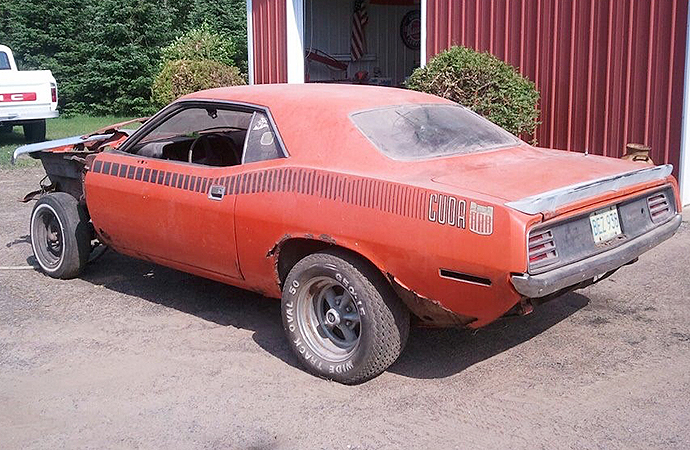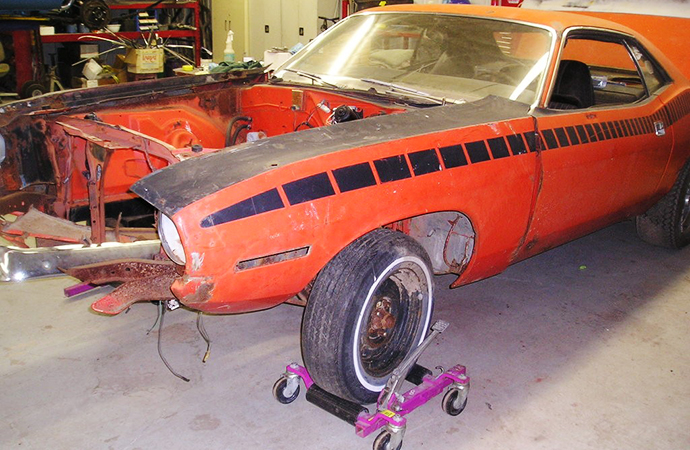The first goal in a car restoration is to build a project plan that you will use to adjust the main elements of cost and schedule until your plan works for you; what you can afford and the quality you desire are the big drivers here.
Since most of us have more time than money, yet desire safety and quality, schedule takes a back seat. A common saying in project management is “plan your work and work your plan.”
I used to cringe when I heard this after being in the trenches of managing projects for Fortune 500 companies. There are many outside factors that can affect even the best laid-out project plan. Most often, it is the client or owner and their desired changes in project scope that will derail a cost item or an established schedule in a project plan.
A good project manager will build in cost and schedule reserves to mitigate these changes affecting the project. Managing expectations is half the battle. For car hobbyists, let’s just try to manage our own expectations — and maybe the expectations of our spouses.
It is important to know what you want to end up with before you begin a project. It is also important to know what resources and or skills you have.
Resources are things like money, a garage, a shop, a truck, a trailer, tools, and time.
Next, think about what amount of work you want to do? Are you a do-it-yourselfer? Do you enjoy the dirty work of a tear down? Do you have the patience to put in a headliner? Are you comfortable vacuuming up rat and raccoon scat and coming face to face with live snakes? Are you OK with getting stung by a swarm of bees?
The answers to these questions will determine what, if any, of the work on your build is outsourced. Often times, even though you have the skill to do something, it is a better value to outsource. Examples: honing your engine block, porting heads, sandblasting parts, etc. There are service providers who have the tooling and equipment to do the work. Buying the equipment to use once, or even twice, is not prudent.
Another example is a simple as a car trailer. A car trailer can cost $2,000 to $3,000. You many only need to haul your car a handful of times. A tow-truck service, even at $120 per haul, might be a better value. Moreover, storing the trailer may not be an option where you live.
Another example is a welder. Even though you took that welding class in high school and know how, maybe having a professional welder do the work is a better way to go.
Don’t get me wrong, having a car trailer, a small sandblaster, a blasting cabinet and even a small 220 amp welder are fun, effective tools to use as an automotive hobbyist. But understand your budget and skills and resources before you begin.

This is a hobby and learning a skill and understanding the tooling used is fulfilling. Moreover, you can use such skill on future projects. Once you complete your first project plan or estimate of cost and schedule, you may need to come back and re-consider what work you will be doing. We also need to do an exercise what vendors you have access to. Keep that in the back of your head for now.
Now, think about what you want to end up with. First and foremost, it should be something safe if for use on public roads. The level of quality and functionality (performance) also are to be considered. Determine what you want. Find pictures. Build out what you want on paper and lay it all out on your kitchen table. Get what is in your head out in front of you to see.
Maybe the build you want already exists, or a least a close version. Go talk to that owner and go see the car in person, ride in it if you can. Ask what they would do differently. Research.
Costs: To establish a budget on your build, build a spreadsheet. I have a pretty standard template I use for my builds:
| Task or item | Work done by or vendor | Cost | Time (Days) |
|---|---|---|---|
| Acquisition cost | Wife | $15,000 | N/A |
| Tear down | Me | 20 | |
| Engine build | AMC Machine | $8,000 | 60 |
| Valve covers | Company name | ? | |
| Tires | Company name | $500 | |
| Sandblasting | L&L Blasting | $1,200 | |
| Bodywork/paint | Itz Custom Cuz Stock Sucks | $15000 | 120 |
| Assembly | Me | 90 | |
| Re-chrome bumpers | Keystone | $700 | |
| Stainless polishing | Me | 7 | |
| Transmission rebuild | BJE Transmission | $1,200 | 14 |
| Partial total | $41,600 |
Separate the outsourced work from the work you will be doing. Then, separate out parts from outsourced labor. Group similar items together. Run a total in each category and analyze. Then run a grand total. Build out your spreadsheet so as each cell or value changes the category total and grand total will change.
Do these costs work for you? Can you realistically afford this? Re-adjust items and/or re-source less expensive parts and/or look for a better value.
You are collecting estimates for your project. You are determining how your project will be executed. The more time in planning and researching the more options you will have to decide on how your build will be executed.
Take your time here. Be as accurate as you can. SWAGS (silly wild-a** guesses) should be avoided, they corrupt your data.
I also use the spreadsheets for historic reference, so include web links to vendors and their phone numbers. I track parts received and returned as well, along with order numbers.
A note on outsourcing: In other blog articles I discuss vendor management, finding body shops, machine shops, upholstery shops etc. Remember, join local car clubs, go to swap meets, network and learn who is who in your area. Get more than one source for a given task. Go talk with them in person and see their shop.
Using a buddy’s brother in a back woods pole barn with a dirt floor to assemble your engine is not worth it. Price is one thing, but actually getting quality work done, and on time, is more important.
The schedule: For outsourced work, what are the timeframes? Lay this info out on your spreadsheet or a timeline. Use a day count or a month count if need be. Generate a total.
Compile the plan: Bring it all together. You now have your project plan. Adjust the plan as needed to fit your goals and resources. Analyze, re-shop, rethink and re-research.
Next, in Part 3: Executing your build
Read more:






Link to full blog article here- https://jakesgeneralstore.com/blog-post/managing-your-automotive-restoration/
Thanks for your tips about outsourcing labor and work and making sure that you know what to plan to do and what to switch with the physical work that will be done yourself. My cousin has thought about rebuilding some parts of a car so that he will be able to sell it to someone else. He would really like to get some of the harder to find parts from a professional so that it can be really nice.
I agree that the budget is a huge driver when it comes to car restoration projects. One of my dreams is to own a custom Porsche build that I can drive for long road trips with friends. I think going on a long trip is what makes having a flashy car so worth it to have because you get to be able to use it a lot.
I have a 1967 Galaxie 500 I’m planning to restore. Can you send me a copy of the Excel file you mentioned?